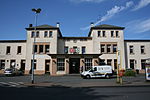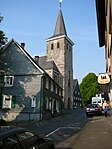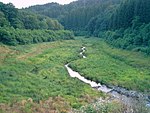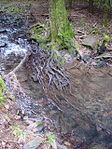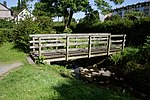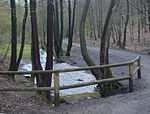Schwelm West station
1988 establishments in West GermanyEnnepe-Ruhr-KreisNorth Rhine-Westphalia railway station stubsRailway stations in Germany opened in 1988Rhine-Ruhr S-Bahn stations ... and 3 more
Rhine-Ruhr S-Bahn stubsS8 (Rhine-Ruhr S-Bahn)S9 (Rhine-Ruhr S-Bahn)
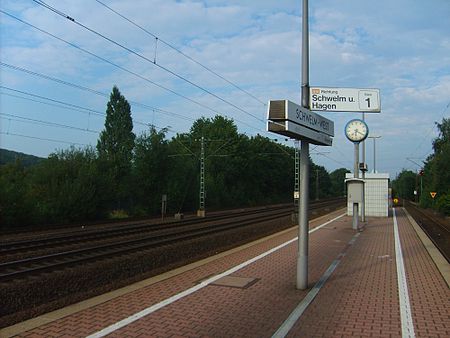
Schwelm West station is a through station in the town of Schwelm in the German state of North Rhine-Westphalia. The station was opened on 29 May 1988 on a section of the Elberfeld–Dortmund railway from Döppersberg, near the current Wuppertal Hauptbahnhof, to Schwelm that was opened by the Bergisch-Märkische Railway Company on 9 October 1847. It has two platform tracks and it is classified by Deutsche Bahn as a category 6 station.The station is served by Rhine-Ruhr S-Bahn line S 8 between Mönchengladbach and Hagen and line S 9 between Recklinghausen and Hagen, both every 60 minutes.
Excerpt from the Wikipedia article Schwelm West station (License: CC BY-SA 3.0, Authors, Images).Schwelm West station
Jesinghauser Straße,
Geographical coordinates (GPS) Address Nearby Places Show on map
Geographical coordinates (GPS)
| Latitude | Longitude |
|---|---|
| N 51.285526 ° | E 7.269478 ° |
Address
Schwelm West
Jesinghauser Straße
58332
North Rhine-Westphalia, Germany
Open on Google Maps

